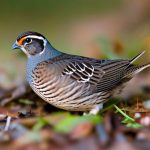Setting up a poultry farm requires a significant initial investment. The first expense to consider is the cost of purchasing or leasing land for the farm. This cost can vary greatly depending on the location and size of the land. Additionally, there are costs associated with building or renovating poultry houses, installing equipment such as feeders and waterers, and setting up fencing to create separate areas for different flocks. Other initial setup costs include purchasing vehicles for transportation and investing in security measures to protect the farm from predators and theft. It’s important to budget for these initial setup costs to ensure that the farm is properly equipped to start operations.
Another significant initial setup cost is the purchase of poultry stock. Whether you choose to start with day-old chicks or mature birds, there is a cost associated with acquiring the initial flock. This cost can vary depending on the breed and quantity of birds purchased. Additionally, there are costs associated with obtaining necessary permits and licenses to operate a poultry farm. These costs can include fees for environmental assessments, zoning permits, and business licenses. It’s important to research and budget for these initial setup costs to ensure that the farm is compliant with all regulations and ready to start production.
Key Takeaways
- Initial setup costs can include purchasing or building a coop, fencing, and other necessary infrastructure for raising poultry.
- Housing and equipment expenses cover ongoing maintenance, repairs, and upgrades to the coop, as well as purchasing feeders, waterers, and bedding materials.
- Feed and nutrition expenses are a significant ongoing cost, including purchasing feed, supplements, and grit for the poultry.
- Healthcare and veterinary expenses can include vaccinations, medications, and routine check-ups to keep the flock healthy.
- Breeding and incubation costs cover the purchase of breeding stock, as well as the cost of an incubator and related supplies for hatching eggs.
Housing and equipment expenses
Housing and equipment expenses are ongoing costs that poultry farmers must budget for. The primary expense in this category is the construction and maintenance of poultry houses. The cost of building or renovating poultry houses can vary depending on the size of the operation and the materials used. Additionally, there are ongoing maintenance costs associated with keeping the houses in good condition, such as repairing roofs, replacing flooring, and updating ventilation systems. It’s important to budget for these expenses to ensure that the birds have a safe and comfortable living environment.
In addition to housing expenses, there are costs associated with purchasing and maintaining equipment for the farm. This includes feeders, waterers, heating systems, and egg collection systems. The cost of this equipment can vary depending on the size of the operation and the quality of the equipment purchased. Additionally, there are ongoing expenses associated with maintaining this equipment, such as replacing worn parts and upgrading to more efficient systems. It’s important to budget for these expenses to ensure that the farm is equipped with the necessary tools to operate efficiently.
Feed and nutrition expenses
Feed and nutrition expenses are a significant ongoing cost for poultry farmers. The primary expense in this category is the cost of purchasing feed for the birds. The cost of feed can vary depending on the type of feed used, the quality of the ingredients, and the quantity purchased. Additionally, there are costs associated with storing and handling feed, such as purchasing storage bins and equipment for mixing feed. It’s important to budget for these expenses to ensure that the birds are receiving a balanced diet that supports their health and productivity.
In addition to feed costs, there are expenses associated with providing supplements and medications to the birds. This can include vitamins, minerals, and medications to prevent or treat common poultry diseases. The cost of these supplements can vary depending on the type and quantity purchased. Additionally, there are ongoing expenses associated with monitoring the health of the birds and adjusting their diet as needed. It’s important to budget for these expenses to ensure that the birds are receiving the necessary nutrients to thrive.
Healthcare and veterinary expenses
Healthcare and veterinary expenses are an important consideration for poultry farmers. The primary expense in this category is the cost of hiring a veterinarian to provide routine care and treatment for the birds. This can include regular check-ups, vaccinations, and treatment for common illnesses. The cost of veterinary care can vary depending on the size of the operation and the health of the flock. Additionally, there are costs associated with purchasing medications and medical supplies to keep on hand for emergencies. It’s important to budget for these expenses to ensure that the birds receive prompt and effective medical care when needed.
In addition to veterinary expenses, there are costs associated with implementing biosecurity measures to prevent disease outbreaks on the farm. This can include investing in sanitation equipment, implementing strict visitor policies, and providing training for farm workers on disease prevention protocols. The cost of these measures can vary depending on the size of the operation and the level of risk for disease transmission. Additionally, there are ongoing expenses associated with monitoring the health of the flock and implementing new biosecurity measures as needed. It’s important to budget for these expenses to ensure that the farm is protected from disease outbreaks.
Breeding and incubation costs
Breeding and incubation costs are an important consideration for poultry farmers who want to maintain a self-sustaining flock. The primary expense in this category is the cost of acquiring breeding stock. This can include purchasing high-quality breeding birds or investing in genetic lines that are known for producing desirable traits in offspring. The cost of breeding stock can vary depending on the breed and quality of birds purchased. Additionally, there are costs associated with housing and caring for breeding birds separately from production birds. This can include building separate housing facilities and providing specialized nutrition and care for breeding birds. It’s important to budget for these expenses to ensure that the breeding program is successful.
In addition to breeding stock expenses, there are costs associated with incubating eggs and raising chicks. This can include purchasing or maintaining incubators, brooders, and other equipment for hatching eggs and caring for young chicks. The cost of this equipment can vary depending on the size of the operation and the quality of the equipment purchased. Additionally, there are ongoing expenses associated with monitoring the health and development of chicks and providing specialized nutrition as they grow. It’s important to budget for these expenses to ensure that the breeding program is sustainable.
Egg collection and processing expenses

Egg collection and processing expenses are an important consideration for poultry farmers who want to sell eggs as a primary product. The primary expense in this category is the cost of purchasing or maintaining egg collection equipment. This can include nest boxes, conveyor belts, egg washers, and packaging materials. The cost of this equipment can vary depending on the size of the operation and the quality of the equipment purchased. Additionally, there are ongoing expenses associated with maintaining this equipment, such as replacing worn parts and updating to more efficient systems. It’s important to budget for these expenses to ensure that eggs are collected and processed efficiently.
In addition to egg collection equipment expenses, there are costs associated with storing and packaging eggs for sale. This can include purchasing refrigeration units, cartons, labels, and other materials for packaging eggs. The cost of these materials can vary depending on the quantity of eggs produced and the quality of packaging materials used. Additionally, there are ongoing expenses associated with monitoring egg quality and ensuring that eggs are stored at proper temperatures to maintain freshness. It’s important to budget for these expenses to ensure that eggs are presented in a way that meets consumer expectations.
Miscellaneous expenses
Miscellaneous expenses are an important consideration for poultry farmers who want to operate a successful and sustainable business. These expenses can include a wide range of costs that don’t fit into other categories but are necessary for running a poultry farm. This can include administrative costs such as accounting services, legal fees, insurance premiums, and marketing expenses. Additionally, there are costs associated with utilities such as electricity, water, and heating fuel for poultry houses. It’s important to budget for these miscellaneous expenses to ensure that all aspects of the business are properly supported.
In addition to administrative and utility expenses, there are costs associated with labor for farm workers who care for the birds, maintain equipment, and handle other daily tasks on the farm. This can include wages, benefits, training programs, and safety equipment for workers. Additionally, there are ongoing expenses associated with maintaining a safe working environment for employees, such as providing protective gear and implementing safety protocols. It’s important to budget for these labor-related expenses to ensure that workers are properly compensated and motivated to contribute to the success of the farm.
In conclusion, running a successful poultry farm requires careful planning and budgeting for a wide range of expenses. From initial setup costs to ongoing housing, feed, healthcare, breeding, egg collection, and miscellaneous expenses, it’s important for poultry farmers to consider all aspects of their operation when creating a budget. By carefully managing these expenses, poultry farmers can ensure that their business is sustainable and profitable in the long term.
If you’re considering the cost to keep quail, you may also be interested in learning about the best flooring options for a chicken coop. Choosing the right flooring is crucial for the health and well-being of your poultry. To find out more about this topic, check out this informative article on Poultry Wizard. Understanding the different aspects of poultry care, including housing and diet, can help you make informed decisions for your flock.
FAQs
What are the basic costs of keeping quail?
The basic costs of keeping quail include purchasing the birds, building or purchasing a suitable coop, providing feed and water, and potential veterinary expenses.
How much does it cost to purchase quail?
The cost of purchasing quail can vary depending on the breed and age of the birds. Generally, quail can range from $2 to $5 per bird.
What are the costs associated with building or purchasing a quail coop?
The cost of building or purchasing a quail coop can vary depending on the size and materials used. Coops can range from $50 for a small DIY coop to several hundred dollars for a larger, professionally built coop.
How much does quail feed cost?
The cost of quail feed can vary depending on the brand and type of feed. On average, expect to spend around $10 to $20 per 50-pound bag of quail feed.
What are the potential veterinary expenses for quail?
Veterinary expenses for quail can vary, but may include vaccinations, parasite control, and potential treatment for injuries or illnesses. It’s important to budget for potential veterinary expenses when keeping quail.
Meet Walter, the feathered-friend fanatic of Florida! Nestled in the sunshine state, Walter struts through life with his feathered companions, clucking his way to happiness. With a coop that’s fancier than a five-star hotel, he’s the Don Juan of the chicken world. When he’s not teaching his hens to do the cha-cha, you’ll find him in a heated debate with his prized rooster, Sir Clucks-a-Lot. Walter’s poultry passion is no yolk; he’s the sunny-side-up guy you never knew you needed in your flock of friends!







